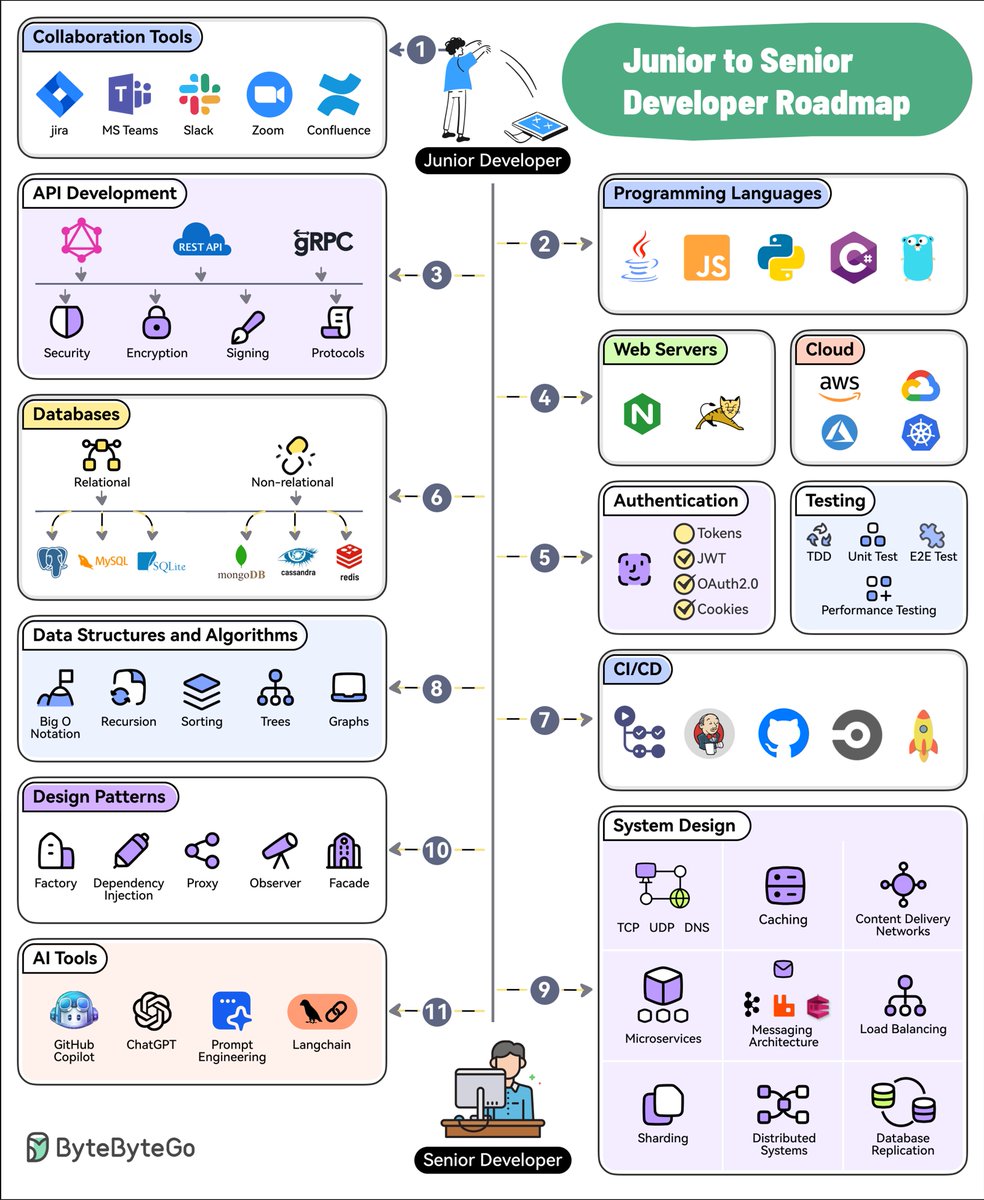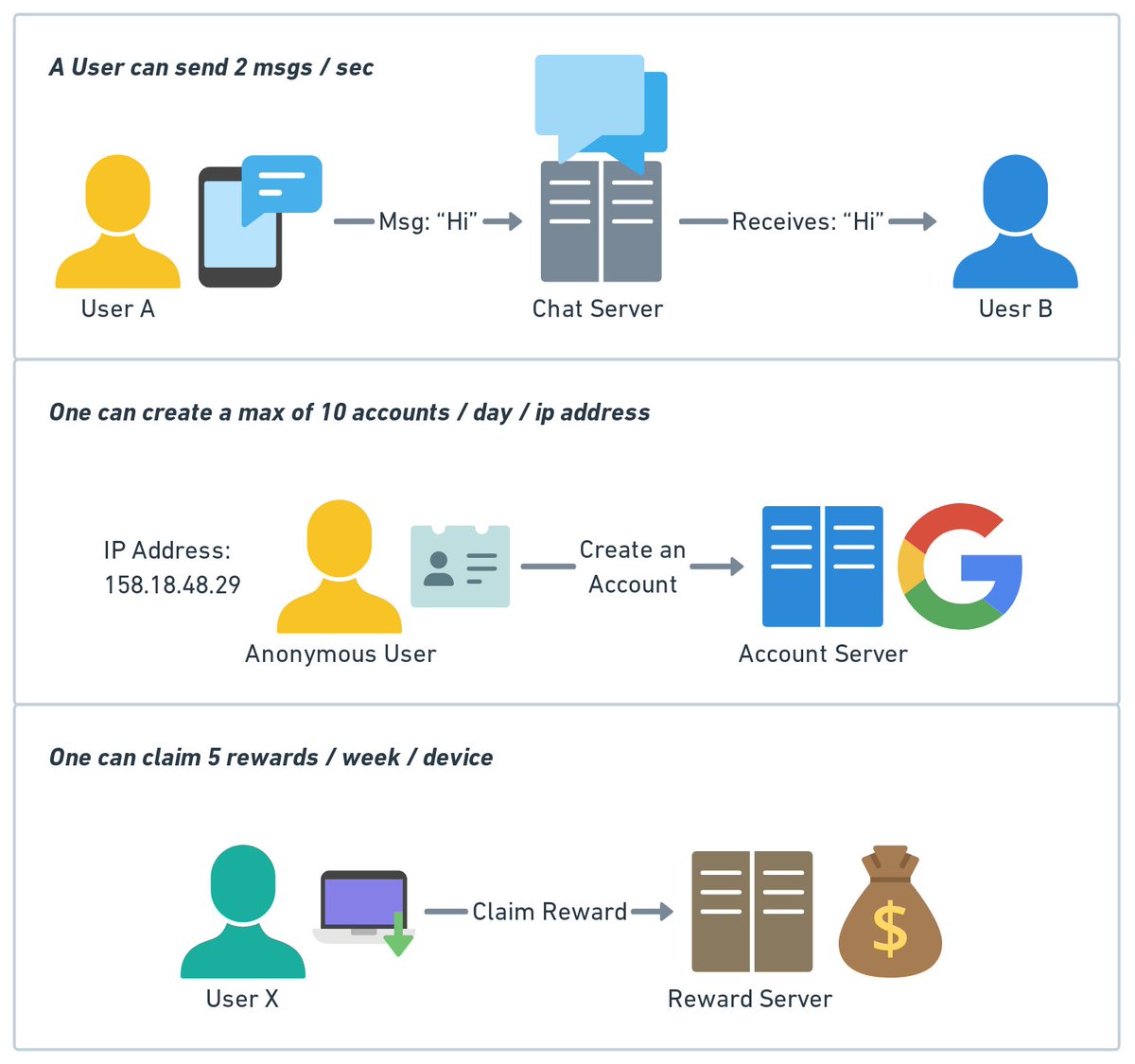1/ 𝐖𝐡𝐚𝐭 𝐢𝐬 𝐭𝐡𝐞 𝐩𝐫𝐨𝐜𝐞𝐬𝐬 𝐟𝐨𝐫 𝐝𝐞𝐩𝐥𝐨𝐲𝐢𝐧𝐠 𝐜𝐡𝐚𝐧𝐠𝐞𝐬 𝐭𝐨 𝐩𝐫𝐨𝐝𝐮𝐜𝐭𝐢𝐨𝐧?
The diagram below shows several common 𝐝𝐞𝐩𝐥𝐨𝐲𝐦𝐞𝐧𝐭 𝐬𝐭𝐫𝐚𝐭𝐞𝐠𝐢𝐞𝐬.
The diagram below shows several common 𝐝𝐞𝐩𝐥𝐨𝐲𝐦𝐞𝐧𝐭 𝐬𝐭𝐫𝐚𝐭𝐞𝐠𝐢𝐞𝐬.

2/ 𝐁𝐢𝐠 𝐁𝐚𝐧𝐠 𝐃𝐞𝐩𝐥𝐨𝐲𝐦𝐞𝐧𝐭
Big Bang Deployment is quite straightforward, where we roll out a new version in one go with service downtime. We roll back to the previous version if the deployment fails.
💡 No downtime ❌
💡 Targeted users ❌
Big Bang Deployment is quite straightforward, where we roll out a new version in one go with service downtime. We roll back to the previous version if the deployment fails.
💡 No downtime ❌
💡 Targeted users ❌
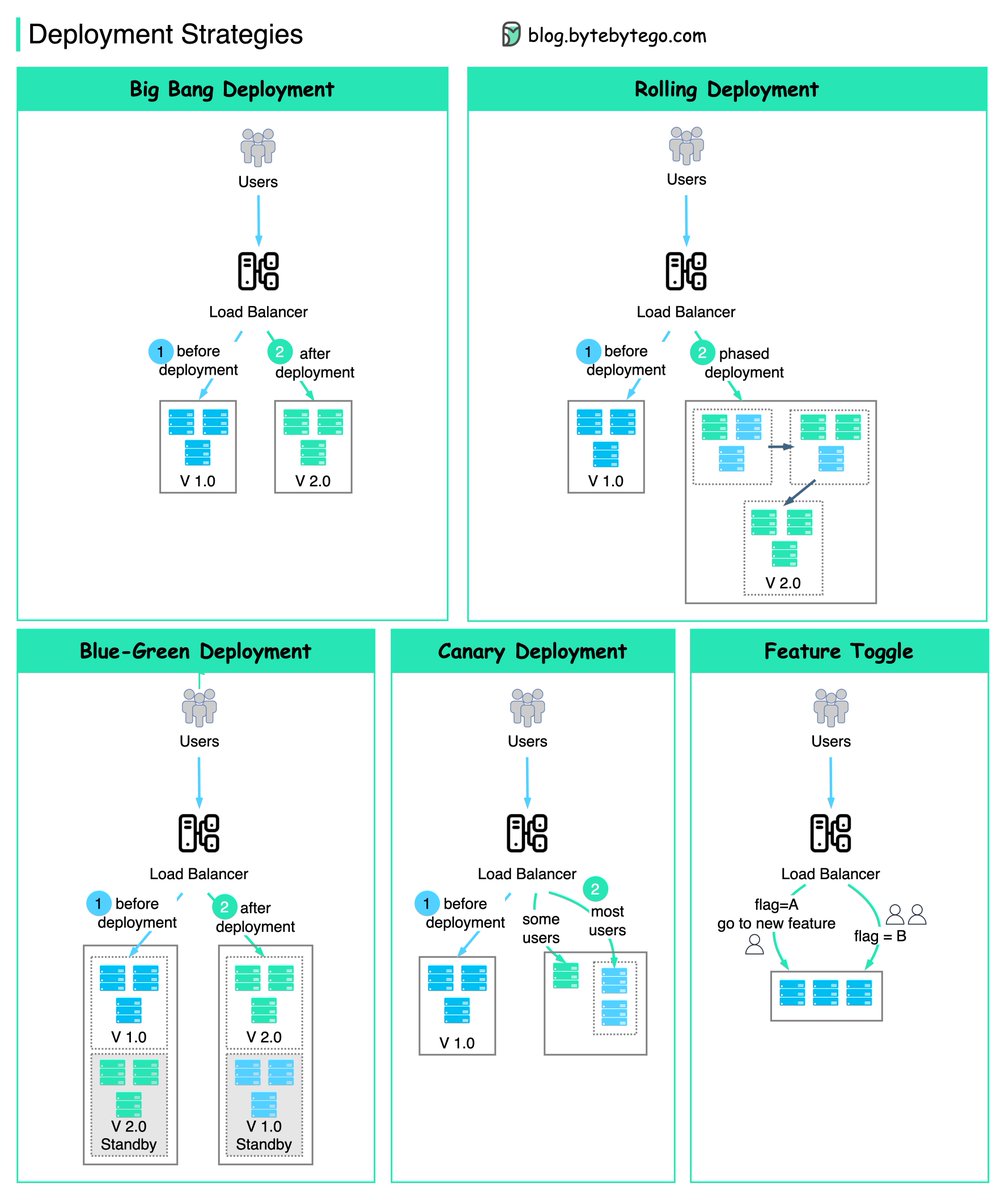
3/ 𝐑𝐨𝐥𝐥𝐢𝐧𝐠 𝐃𝐞𝐩𝐥𝐨𝐲𝐦𝐞𝐧𝐭
Rolling Deployment applies phased deployment compared with big bang deployment. The whole plant is upgraded one by one over a period of time.
💡 No downtime ✅
💡 Targeted users ❌
Rolling Deployment applies phased deployment compared with big bang deployment. The whole plant is upgraded one by one over a period of time.
💡 No downtime ✅
💡 Targeted users ❌

4/ 𝐁𝐥𝐮𝐞-𝐆𝐫𝐞𝐞𝐧 𝐃𝐞𝐩𝐥𝐨𝐲𝐦𝐞𝐧𝐭
In blue-green deployment, two environments are deployed in production simultaneously. Once the green environment passes the tests, the load balancer switches users to it.
💡 No downtime ✅
💡 Targeted users ❌
In blue-green deployment, two environments are deployed in production simultaneously. Once the green environment passes the tests, the load balancer switches users to it.
💡 No downtime ✅
💡 Targeted users ❌
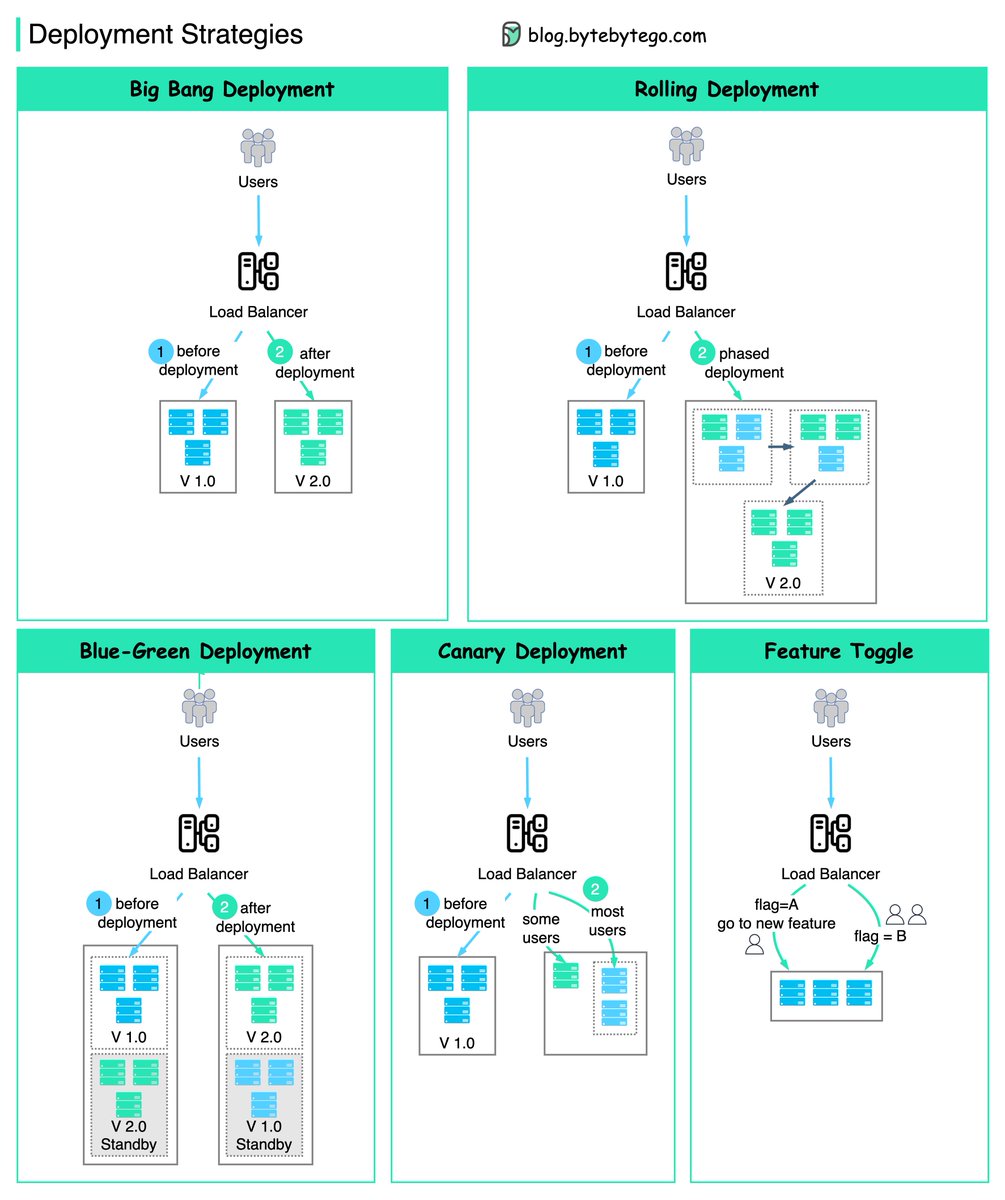
5/ 𝐂𝐚𝐧𝐚𝐫𝐲 𝐃𝐞𝐩𝐥𝐨𝐲𝐦𝐞𝐧𝐭
With canary deployment, only a small portion of instances are upgraded with the new version, once all the tests pass, a portion of users are routed to canary instances.
💡 No downtime ✅
💡 Targeted users ❌
With canary deployment, only a small portion of instances are upgraded with the new version, once all the tests pass, a portion of users are routed to canary instances.
💡 No downtime ✅
💡 Targeted users ❌
6/ 𝐅𝐞𝐚𝐭𝐮𝐫𝐞 𝐓𝐨𝐠𝐠𝐥𝐞
With the feature toggle, A small portion of users with a specific flag go through the code of the new feature, while other users go through normal code.
💡 No downtime ✅
💡 Targeted users ✅
With the feature toggle, A small portion of users with a specific flag go through the code of the new feature, while other users go through normal code.
💡 No downtime ✅
💡 Targeted users ✅
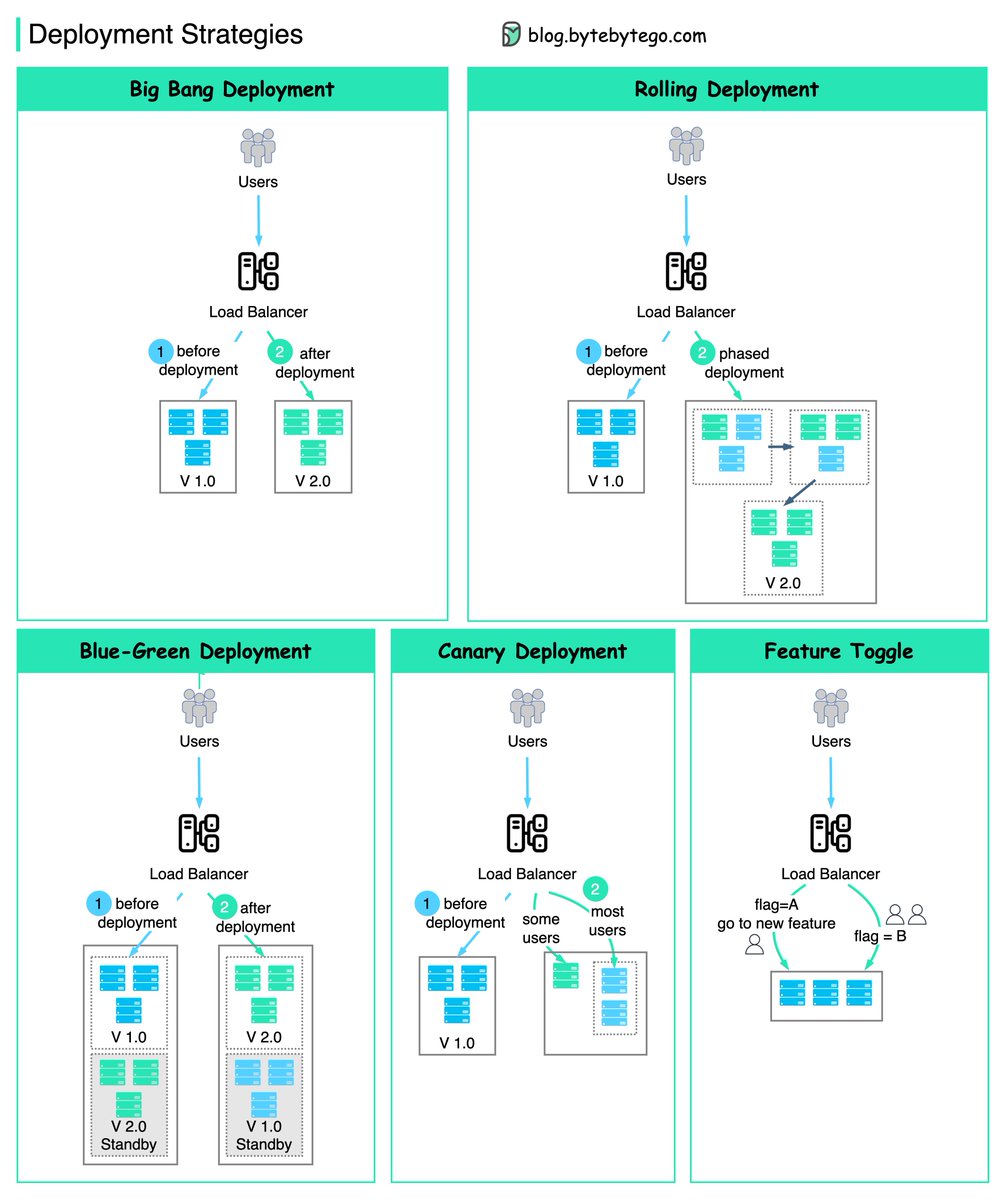
7/ 👉 Over to you: Which deployment strategies have you used?
8/ I hope you've found this thread helpful.
Follow me @alexxubyte for more.
Like/Retweet the first tweet below if you can:
Follow me @alexxubyte for more.
Like/Retweet the first tweet below if you can:
https://twitter.com/alexxubyte/status/1615389760834670592
Enjoy this thread?
You might like our System Design newsletter as well:
You might like our System Design newsletter as well:
https://twitter.com/alexxubyte/status/1579130017455300608
• • •
Missing some Tweet in this thread? You can try to
force a refresh




